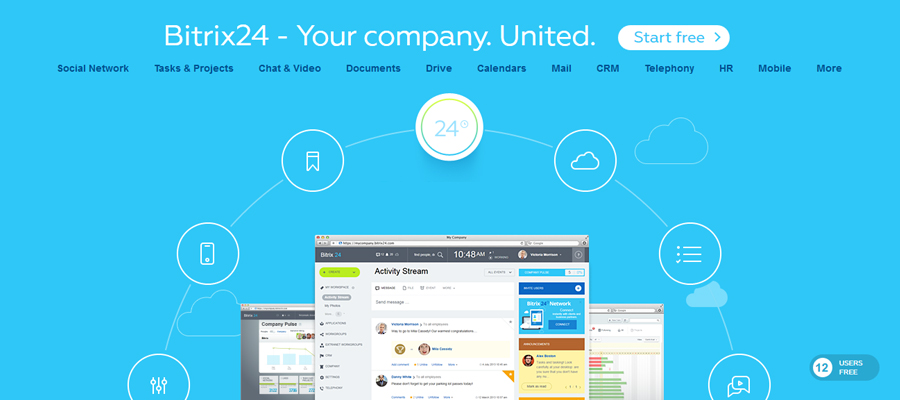A challenge issue that agency managers and creatives face is how to complete website projects as quickly as possible – but without compromising on quality.
It often seems like one must be traded for the other.
Those who prioritize efficiency shuttle websites from one person’s desk to another. This way, the focus is on completion of individual tasks instead of getting distracted by the project as a whole.
Those who prioritize quality rely on the creative team to work through each step together. The focus is on getting as many talented and well-informed individuals involved in the project as possible instead of on expediency of delivery.
But it doesn’t have to be that way.
It’s definitely possible to use collaboration to fuel both efficiency and quality in creative projects.
Today, we’re going to show you how the Duda web design platform can be used to enable both efficiency and creative collaboration for teams.
Creative Collaboration with Duda: How It Works
As your agency grows in size, and you work with more clients who want to be more involved, it can become difficult to rope everyone in. Collaboration would solve that issue; however, it has to be done correctly if it’s to pay off in terms of creative output and efficiency.
Duda offers such a solution for web design agencies.
Look at the Big Picture
A website is not the sum of all its parts. A website is an experience. That’s why, when you take too narrow of an approach to web design, the end result tends to be disjointed.
In all fairness, it’s really hard to embrace holistic thinking about web development. Each of your team members has their own specialty, so their view of a website is going to differ from person to person. This will also be different from how your client looks at a website.
So, how exactly do you collaborate with so many disparate parties and viewpoints involved?
To start, individual contributors are able to play to their strengths and spend time working on their unique piece of the puzzle with Duda. To help them do this, use the Users and Permissions settings to help them focus on what they need to.
But you can also use the web design platform to bring the entire project flow into full view.
Even if your designer were creating a custom layout for a client’s Services page, for example, they should be able to work within the context of the entire structure of the site. The same goes for other creatives on your team. Writers shouldn’t start from a blank page. Give them a space to craft a story that fits into the bigger picture seamlessly.
In a sense, Duda allows creative teams to collaborate passively. Even when they’re not directly interacting, they have the ability to build upon what the others have created.
Automate the Pieces That Make Sense
When done right, collaboration enhances creativity and speed. The key to doing this is to automate the parts of your web design workflow that don’t require a human touch.
The less “work” your team has to do, the more space and freedom they have to be creative.
Here are some ways in which you can automate your workflow with Duda to improve speed and creativity:
Smart Email Templates - When it comes time to prompt a team member or client for action, crafting emails with instructions takes time. Plus, when done by hand, you run the risk of providing inconsistent or incorrect messaging (especially if more than one of you is doing so).
Smart email templates allow you to quickly personalize and click the “Send” button on messages.
Design Libraries - While website designs may vary greatly, the type of content that appears within them doesn’t.
Think about something like the Contact page. Most of these — regardless of website type — have a header image, a brief prompt to “Contact Us,” and a short contact form at the bottom.
With Duda, you can build pages with greater ease by utilizing:
- Pre-made or customized full page templates.
- Your own custom-built sections.
- Personalized or custom-built widgets.
Save these templates to your library and give your team the ability to create high-quality websites for clients in no time at all.
Stop the Unproductive Feedback Loop
Unfortunately, many clients have developed a reputation as a hindrance to creativity and getting projects done on time. They delay on delivering content owed to your agency. Their feedback is unproductive or unclear. They insist on using bad practices because someone else told them their website would be better off going in a different direction.
But part of what you do is to take control over projects, right? This doesn’t just mean getting employees to show up on time or deliver tasks when they’re due. This also means getting your clients to effectively collaborate.
There are a couple tools you can use to do this in Duda:
Content Collection - Tracking down content (e.g. logos, image assets, copy, etc.) from clients can be a real pain. But Duda provides you with a tool to ask for exactly what you need and make sure it’s been collected on time.
Site Comments - Rather than email your clients for feedback and hope that they respond in a timely, professional, and helpful manner, loop them into the conversation in real time.

By utilizing the site comments feature, you can stop the endless review cycles. Team members receive feedback that’s direct and relevant to the work they’ve done as clients are given a means for effectively communicating with them.
In the end, all people involved in the project — agency-side and client-side — become true collaborators instead of individual contributors working at odds with one another.
Wrapping Up
Clearly, collaboration is an indispensable part of the web design workflow. You just want to make sure that it doesn’t interfere with completing projects in a timely manner and won’t conflict with your team’s ability to create something truly awesome for clients.
By using the Duda web design platform, you can strike a perfect balance between all these things.




















